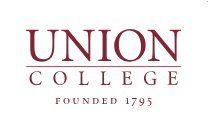What is Fair Use?
Fair use is the most relevant copyright exception for students since it allows many uses of copyrighted works for the purposes of education and research. However, not all educational uses are fair uses.
Fair use is a doctrine found in US copyright law that recognizes that there are certain uses of copyrighted works that don't require permission from the author or copyright holder. Some of the "classic" examples of situations where a use is likely to be fair include criticism, commentary, parody, news reporting, teaching, scholarship, and research.
Everyone is free to exercise their fair use rights, but in some cases, fair use is decided by a judge overseeing a copyright infringement lawsuit. While someone might assert that their use of a copyrighted work is fair use, the copyright owner can disagree and assert that it is copyright infringement. That means that those who want to exercise their fair use right will need to do so with thought and weigh the risks involved in certain uses.
How Do I Know If My Use Is Fair?
Fair use is purposefully vague so that it can remain flexible as technologies and types of uses change over time. However, its vagueness can make it more difficult to decide when your use is or isn't fair. In order to decide if a use is fair, you have to analyze the particular details of your situation and proposed use.
There are four factors that must be considered when making a fair use decision, although others can be considered. These factors are:
- The purpose of the use
- The nature of the copyrighted work
- The amount and substantiality of the work that is used in relation to the work as a whole
- The effect on the potential market for or value of the copyrighted work
Another factor that has emerged as a consideration in recent copyright case law is transformative use. A particular use of a copyrighted work may be considered transformative if it uses the copyrighted work in a completely new way or with a new purpose that the original work's creator never intended. A transformative use of a copyrighted work can help weigh in favor of fair use.

